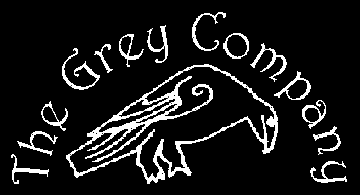Basic medieval Costumes for Girls and Women
European Dark Ages Dress
During the Dark Ages dresses were made with the same pattern as the basic tunic, though usually longer and very loose. It was not until the 11th century that dresses became fitted to the body. Darts were not used until much later in the period and drop waist or seams on the waist line were not used at all. If you wish to have a more fitted dress use a princess line pattern as this does not use darts for its shape, but will still flatter the body.
To make a female outfit follow the instructions for the tunic with a few changes. For the chemise give it a high round neck (use a keyhole neckline) and lengthen the hem to touch the ground. The sleeves should be wrist length and reasonably tight.
The chemise can be omitted altogether as it is usually completely covered by the underdress.
The underdress can be the same design as the chemise with the sleeves a bit looser. It can be decorated around the neck, wrist and hem.
The over tunic has the most varied designs. The neck can be any shape to show off the undertunic.
The length would normally finish about knee level to show off the underdress. The sleeves can come in many varying shapes.
If the sleeves have a wide opening at the wrist either line the sleeves or use French seams to make them look more professionally finished.
A belt would be used to pull in the waist and to hitch up the skirts if long. A head rail or wimple would also have been worn.
If you wished to give the outfit a more fitted line, lace up the back from the waist to the neck with eyelets and leather lacing. This will pull the dress closer to the body.
To do this simply line the back seam. Get two thin pieces of scrap material a little bit longer than the seam and pin them to the good side of the seam. Stitch them down, turn inside and sew a finishing stitch to stop them turning out. This will finish the seam and make it re-enforced for eyelets and lacing.
The underdress and overdress would never be made from the same material and the colour most often varied. Undertunics were often cream or pale colours.

